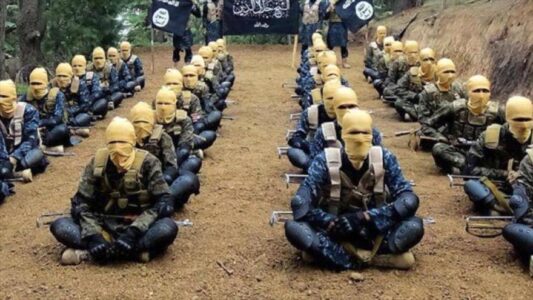
Islamic State recovered and is ready for resurgence in Afghanistan
The Islamic State’s affiliate in Afghanistan – seemingly pushed to the brink last year following unrelenting pressure from the U.S. and Afghan militaries, and by multiple Taliban offenses – appears to have recovered and may soon look to strike further afield, according to U.S. military and intelligence officials.
The turnaround for IS-Khorasan, as the group’s Afghan affiliate is known, contrasts with its waning fortunes just over a year ago, when U.S. officials estimated it had lost “up to half its force” while suffering a string of defeats in Nangarhar and Kunar provinces.
Stripped of its key territories, U.S. intelligence estimates at the time suggested IS-Khorasan was down to as few as 1,000 fighters. So too, there were growing questions about its offensive capabilities.
But more recent intelligence suggests the bleeding has, at least stopped.
“New leadership allowed it to stabilize and increase localized and lone wolf attacks throughout the second half of the year [2020],” U.S. Central Command Gen. Kenneth “Frank” McKenzie, who oversees U.S. forces in Afghanistan, told a virtual forum Monday.
And while there are doubts about whether IS-Khorasan will again be able to hold territory as it once did, the group is showing few signs of slowing down in 2021.
“The group maintains a steady operational tempo and probably retains the ability to conduct attacks in Kabul and other urban centers,” a U.S. official told VOA on the condition of anonymity in order to discuss the latest intelligence assessment.
And though most of the attacks have been focused on areas in which IS-Khorasan has historically had a presence, the group’s leadership has not given up on some of its grander ambitions.
“We are concerned about the group’s demonstrated interest in conducting external operations,” the official said, noting IS-Khorasan is still “of the largest and most lethal branches of ISIS’s global network and maintain a direct relationship with ISIS leaders in Iraq and Syria.”
The U.S. and other intelligence agencies have also seen signs of the terror group’s ability to persist in parts of Afghanistan it once called home.
“Despite its significant loss of territory, ISIL-K has not been entirely eradicated from the districts of Manogay, in Kunar, and Achin, in Nangarhar,” according to a new United Nations report, referring to the group by one of its many acronyms.
“Sleeper cells are active in other parts of the country, particularly in Kabul,” the U.N. report added, noting that is where new IS-Khorasan leader Shahab al-Muhajir, also known as Sanaullah, is based.
Estimates from global intelligence services now put the number of IS-Khorasan fighters at between 1,000 and 2,500. While not the 5,000 fighters it once boasted, it has been enough for the group to carry out a series of high-profile attacks, including the 20-hour-long assault on a prison in the eastern Afghan city of Jalalabad this past August, which killed at least 29 people as well as November’s attack on Kabul University, which killed at least 19.
Source: VOA News





